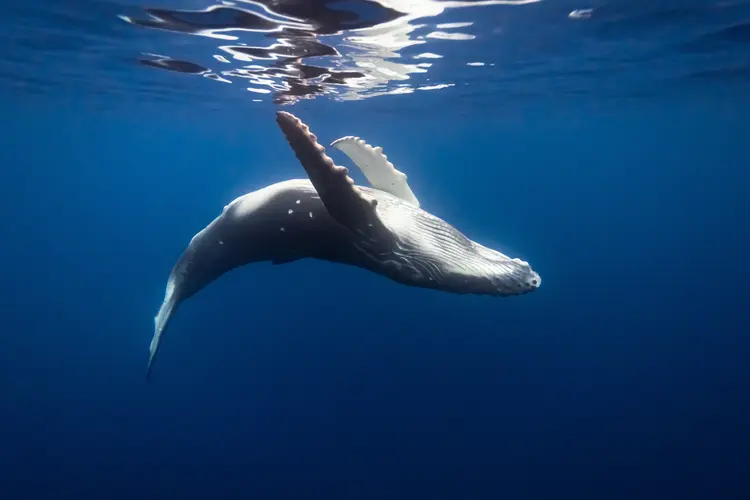
Humpback whales are swimming up to 20 per cent more than previous scientific estimates have suggested, new study finds
By
A study – published in Ecology – has revealed whales are swimming up to 20 per cent further than previous estimates suggested, drastically higher than calculations made by traditional methods.
The study, led by a multidisciplinary team of global researchers from the University of Connecticut, Smithsonian Institute and Pontific University of Ecuador, highlights how animal movement is not surface journeys.
Enjoying this article? Check out our related reads:
Instead, marine animals such as whales move in three dimensions: across the surface and both up and down the water column. By utilising geodesy (the science of the Earth’s shape) alongside animal tracking data, researchers were able to show how the curvature of the Earth, alongside diving behaviour, significantly extended the total distance travelled.
‘For years, we’ve tracked whales using satellite tags, plotting their movements across oceans,’ said co-author Dr Olaf Meynecke. ‘But this research shows we’ve been looking at only part of the picture.’
Using satellite data from the Whales & Climate Program’s longest continuous humpback whale track from Ecuador to near Antarctica, the team compared two methods of measuring distance: a standard surface track of approximately 6,658 kilometres and a revised 3D estimate.
Results showed the 3D estimate produced a value 1,055 kilometres greater, or about 16 per cent more distance covered by the whales.

‘For humpback whales migrating between South American breeding grounds and Antarctic feeding areas, that could mean covering up to 14,000 kilometres in a single migration season,’ Dr Meynecke said. ‘That’s seven times more than the average human travels in a year.’
‘These findings are more than just fascinating; they have real implications for how we understand the energy demands and ecological pressures on migrating species. If animals are expending more energy than previously estimated, we may be underestimating the ecological costs of migration and the impacts of environmental change,’ Dr Meynecke continued.
Previously, humpback whale populations were decimated by commercial whaling activities in the 19th and early 20th century. Since a moratorium back in 1985, populations have steadily increased. Still, the species faces threats from vessel strikes, underwater noise and entanglement in fishing gear.
Their migrations – spanning around 5,000 miles each way from tropical breeding grounds to colder, more productive feeding grounds – are some of the longest out of any mammal on the planet.




